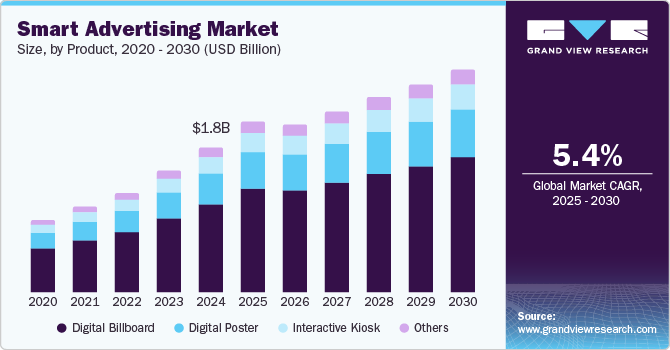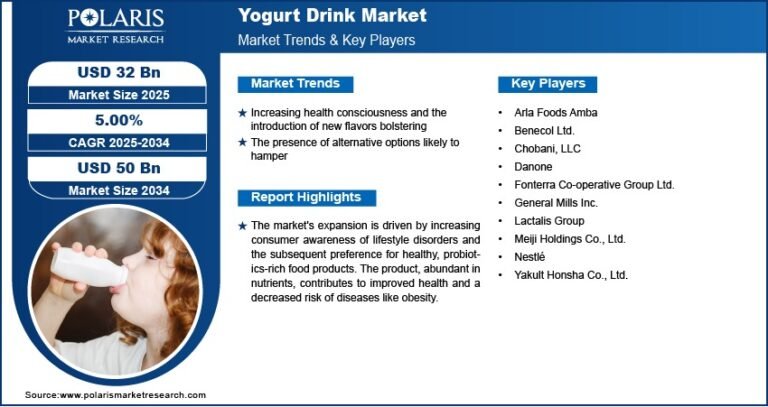Smart Advertising Market Size, Share & Trends Analysis grow at a CAGR of 5.4% from 2025 to 2030

The global smart advertising market size was valued at USD 1.83 billion in 2024 and is projected to grow at a CAGR of 5.4% from 2025 to 2030. An increase in demand for personalized and customized marketing, integration of modern technologies with existing advertising strategies, growing dependency on data-driven decision making, increasing penetration of smartphone technology, and rising availability of high-speed internet are some of the key growth driving factors for this market.
Request a free sample copy or view report summary: https://www.grandviewresearch.com/industry-analysis/smart-advertising-market/request/rs1
The emergence of technologies such as Artificial Intelligence (AI), data analytics, machine learning, the Internet of Things (IoT), Virtual Reality (VR), and others have changed multiple dynamics of the advertising and marketing industry. This has encouraged numerous companies and industries to adopt and integrate modern technologies in marketing and advertising strategies. A noteworthy transition from conventional marketing to digital marketing and novel trends in advertising has developed a growing demand for a smart advertising market.
Enormous changes in consumer behavior driven by the increasing use of digital platforms and innovation-backed devices have developed a greater need for enhanced and sophisticated marketing solutions. The focus on creative content delivery and branding has shifted to targeted advertisement. The generation of vast data from increased screen time and internet-driven devices has facilitated the smart advertising market in recent years. Contextualized advertising and the development of a broader advertising ecosystem with the help of streaming platforms, retail ad networks, and more are some of the modern concepts that have influenced the demand for smart advertising.
Availability to even smaller brands, technology-driven strategy implementations, and cost-effectiveness are adding to growth opportunities for this market. Trends such as hyper-personalization, social commerce, interactive content delivery, augmented reality, AI chatbots, Metaverse, voice search optimization, use of schema markup, real-time data analysis, and more are continuously fueling the growth of the smart advertising market.
Multiple businesses and industries’ focus on adopting advanced technologies and enhancing brand visibility through effective marketing has generated greater demand for smart advertising. For instance, in March 2024, Swiggy Pvt Ltd., one of the key platforms in the Indian food and grocery delivery market, introduced smart links, an added feature for restaurant businesses that enables them to share links on social media to redirect potential customers to the order menu efficiently.
Component Insights
Based on components, the hardware segment dominated the global market for smart advertising with a revenue share of 49.6% in 2024. Hardware plays a vital role in the delivery of smart advertising campaigns. This includes IoT-driven devices, sensors, cameras, smartphones, and others. Increasing use of smart devices, connected devices technology, and internet availability facilitates seamless data collection and ensures the availability of contextual data points for campaign development and delivery. Growing dependability on devices, increasing accessibility to advanced devices developed by top technology organizations, and entry of multiple companies in the hardware development industry are expected to deliver growth for this segment.
The software segment is projected to grow with significant CAGR during the forecast period owing to the increasing use of various software solutions for functions such as data gathering, strategy implementation, content generation, content delivery, AI assistance, campaign building, campaign deployments, and more. Software plays a vital role in analyzing audience demographics, optimizing campaigns, tracking performance metrics, managing budgets, and more.






